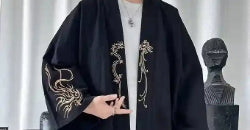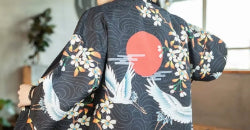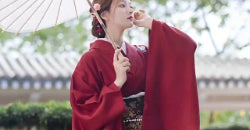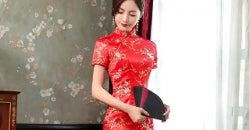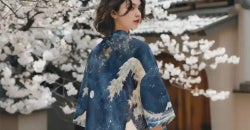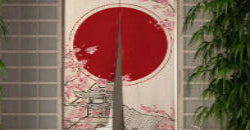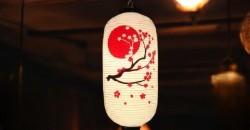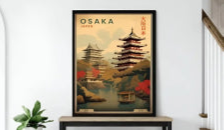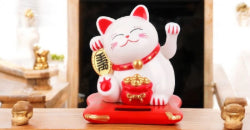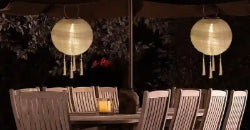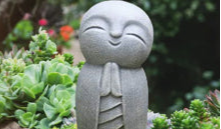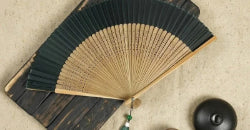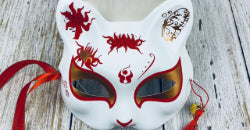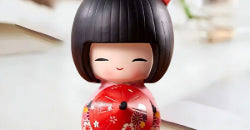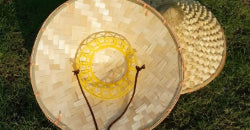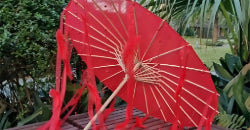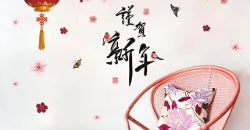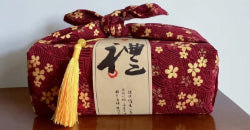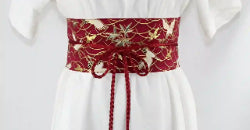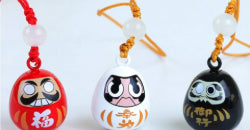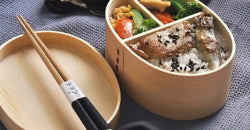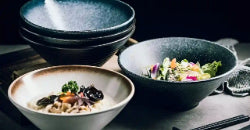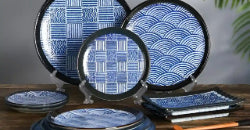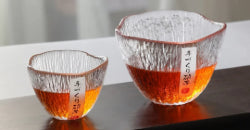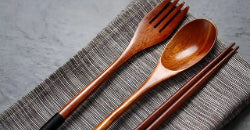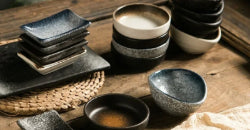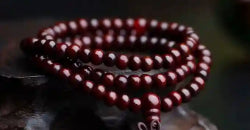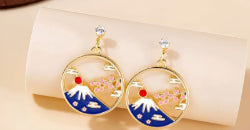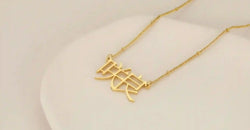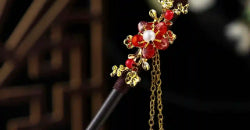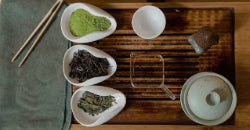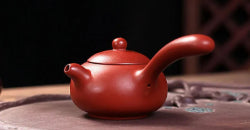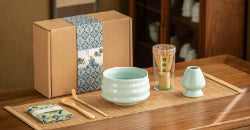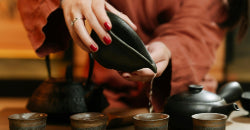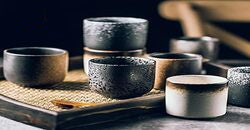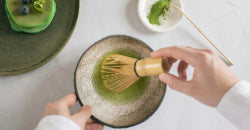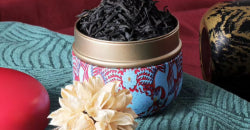Introduction to Japanese Art
Introduction to Japanese Art
Japanese art, rich in tradition and symbolism, fascinates the world with its elegance and spiritual depth. Inspired by Shintoism, Zen Buddhism, and sometimes foreign influences, the art of Japan reflects a culture deeply rooted in nature and simplicity . This journey through Japanese art will reveal the main forms of artistic expression, each carrying a particular meaning in Japanese culture.
Japanese Prints: The Floating World of Ukiyo-e
Japanese woodblock prints, which appeared during the Edo period, embody one of Japan's most significant artistic expressions. Originating from the ukiyo-e movement, they delicately depict daily life, enchanting landscapes, and iconic figures such as courtesans and kabuki actors. The term "ukiyo-e," meaning "images of the floating world," echoes a Buddhist vision of ephemerality and fleeting beauty.
This artistic style fits perfectly into the world of Japanese decoration , bringing a touch of elegance and serenity to interiors. To better understand its importance, here are some key aspects of its evolution:
- Varied inspiration and themes : scenes of urban life, majestic nature and mythical figures.
- Refined engraving techniques : use of wood for multi-color prints.
- Lasting cultural influence : notable impact on art and decoration across the world.
Even today, these prints continue to fascinate, embodying a perfect balance between tradition and timeless aesthetics.
Ikebana: The Art of Flower Arrangement
The philosophy of Ikebana
Ikebana, or "the way of flowers," is much more than just floral decoration. This art, which has its roots in Buddhist rituals, is an expression of harmony between man and nature. Ikebana emphasizes simplicity and asymmetry, with each floral arrangement symbolizing heaven, earth, and humanity.
Practice and tools
To practice ikebana, one must follow strict rules and use specific tools such as a vase, a flower pick, and pruning shears. Each floral arrangement is a meditation on the ephemeral beauty of flowers and a tribute to nature.
Japanese Calligraphy: An Art of Meditation
Japanese calligraphy, or "shodo," is much more than just a writing technique. It is a spiritual practice that promotes meditation and heightened awareness through fluidity and precision of gestures.
Origins and Spiritual Importance
Calligraphy, imported from China over 3,000 years ago, is a central art in Japanese culture . Far from being a simple means of communication, calligraphy is considered a spiritual exercise that elevates consciousness and allows one to achieve a form of meditation.
The Practice of Calligraphy
Writing ideograms using a brush and Chinese ink is a practice that requires precision and mastery . Each character possesses a deep meaning and inherent beauty, making calligraphy a respected art form worldwide.
Japanese Tattooing or Irezumi: An Ancient and Controversial Art
Japanese calligraphy, or shodō , is much more than just a writing art: it embodies a spiritual and aesthetic discipline. Through the masterful gesture of the brush, it connects body and mind, offering a path to meditation and inner harmony.

The History of Tattooing in Japan
Japanese tattooing , known as Irezumi, has a long history dating back to prehistoric times. Initially used by indigenous tribes to mark social standing or for aesthetic reasons, tattooing has evolved over the centuries. During the Edo period, tattoos became a symbol of bravery, but also of criminality, leading to their banning for much of Japan's modern history.
The Patterns and Their Meaning
Today, despite its negative connotation in Japan, Irezumi is recognized worldwide for the complexity of its designs and the skill of its tattoo artists. The designs of koi carp, dragons, and cherry blossoms are imbued with mythological and spiritual meanings , making each tattoo a unique work of art.
Japanese Martial Arts: The Fusion of Discipline and Spirituality
Japanese martial arts combine physical rigor and spiritual pursuit, inherited from the ancestral traditions of the samurai. Much more than simple fighting techniques, they convey a philosophy of life based on respect, self-control, and harmony.
The Legacy of the Samurai
Japanese martial arts, deeply rooted in samurai culture, are not just combat disciplines. They embody a philosophy of life based on Bushido, the warrior's code of honor. This code emphasizes values such as honor, respect, honesty, and loyalty, which are at the heart of martial arts practice .
The Main Disciplines
Among the most widely practiced martial arts are judo, karate, aikido, and kendo. Each of these arts teaches not only mastery of the body, but also of the mind. The movements, often graceful and powerful, are executed with a precision that reflects the importance of balance and harmony, both in combat and in daily life.
The Tea Ceremony: A Ritual of Refinement and Serenity
The tea ceremony is an ancient art that combines aesthetics, spirituality, and conviviality. More than just a moment of tasting, it embodies a philosophy of life based on harmony, respect, purity, and tranquility.
The Origin and Evolution of the Ceremony
The tea ceremony, or chanoyu, is an ancient Japanese tradition derived from Zen Buddhism. Imported from China in the 9th century, matcha green tea is at the heart of this ritual, which has been perfected over the centuries. This ritual, which goes far beyond the simple preparation of a drink, is a celebration of serenity, refinement, and respect.
The Stages of the Ceremony
Each tea ceremony is a highly codified event, including phases of spiritual preparation, welcoming guests, cleaning the tools, preparing and serving the tea, and finally, a further cleaning of the objects used. The master of ceremonies, after years of study, guides each step with exemplary precision and grace, while guests participate by respecting specific gestures and polite phrases.
Kintsugi: The Art of Sublimating Cracks
Kintsugi is much more than a simple method of repair: it embodies a profound philosophy that values imperfections and the scars of the past. By enhancing cracks with gold, this Japanese practice transforms fragility into strength and the ephemeral into eternity. Through this art, a true lesson in resilience and beauty is revealed.
The philosophy of Kintsugi
Kintsugi, the art of repairing broken ceramics with lacquer mixed with gold powder, is a craft practice that symbolizes healing and rebirth. This technique is steeped in the Wabi-Sabi philosophy, which finds beauty in imperfection and simplicity. Rather than masking cracks, kintsugi highlights them, transforming a broken object into a unique work of art.
The practice of Kintsugi
The kintsugi process is long and requires great patience. Each step, from repair to decoration, is carried out meticulously. This practice encourages acceptance and embracing of imperfections, a life lesson that goes far beyond simple physical repair.
Traditional Japanese Theater: A Stage of Legends and Symbolism
Traditional Japanese theater is an ancient art that blends aesthetics, symbolism, and expressiveness. Among the most iconic forms, Noh and Kabuki illustrate two distinct visions of stage performance, between minimalist poetry and spectacular exuberance.

Noh Theater: Poetry in Motion
Noh theater is a form of traditional Japanese theater that combines poetry, dance, and music in highly stylized performances. Actors wear intricately carved wooden masks, which express subtle emotions through their tilt and lighting. Noh, with its slow-moving scenes and narratives inspired by mythology and samurai history, is a deeply spiritual theatrical experience.
Kabuki Theatre: The Splendor of Popular Drama
Kabuki, on the other hand, is a more exuberant and popular form of theater, characterized by lavish costumes, elaborate makeup, and dramatic gestures. The stories told in Kabuki are often epic legends or family dramas, with supernatural elements and spectacular special effects. Kabuki is a visual spectacle as much as a narrative performance, captivating audiences with its exaggerations and energy.
Traditional Japanese Dolls: Guardians of Culture and Symbols
Traditional Japanese dolls embody a rich cultural heritage, blending art, spirituality, and symbolism. Through their forms and uses, they bear witness to ancient beliefs and continue to occupy an important place in Japanese society.

Types of Dolls and Their Meanings
Traditional Japanese dolls, such as Kokeshi, Daruma, Hina, and Musha, are much more than just toys. These objects, often made of painted and lacquered wood, play an important role in Japanese culture. They serve as protective talismans, health amulets, and even religious sculptures.
Their Roles in Daily Life
Each doll has a special meaning: Daruma, for example, are used to grant wishes, while Hina are displayed during the Hinamatsuri festival to protect girls. Musha dolls, on the other hand, represent warriors and are associated with courage and strength. These traditional objects continue to be an integral part of Japanese cultural life, transcending generations.
Japanese Motifs: Hidden Symbols in Art
Japanese motifs, both aesthetic and symbolic, contain profound meanings that span the centuries. Rooted in Japanese culture, these symbols are omnipresent in everyday art, carrying messages of prosperity, protection, and longevity.

The meaning of patterns
Japanese patterns, found on fabrics, ceramics, and various art objects, carry deep meanings. Motifs such as hemp leaves (asanoha) , tortoise shells (kikkō), and waves (seigaiha) are not only aesthetically pleasing, but also symbolic. For example, asanoha is believed to bring strength and growth, while kikkō is a symbol of longevity .
Use in Daily Life
These motifs are not merely decorative; they are often used to convey wishes for happiness, prosperity, or protection. Textiles adorned with these patterns are frequently worn on special occasions, and objects decorated with these symbols are prized for their supposed power to positively influence life.
The Samurai: Actors and Guardians of Traditional Arts
Samurai, emblematic figures of Japanese culture, have not only left their mark on history through their martial arts, but also through their essential role in preserving traditional arts. Similarly, geisha, true guardians of artistic traditions, have dedicated their lives to practicing and transmitting Japan's refined cultural forms.

The Samurai: Warriors and Patrons of the Arts
The samurai, renowned for their code of honor and martial expertise, were also patrons of the arts. In addition to their combat training, they practiced calligraphy and the tea ceremony, and supported the development of Noh theater. Their influence helped shape many Japanese art forms, combining discipline and refinement.
Geishas: Guardians of Artistic Traditions
Geisha, literally "people of the arts," are Japanese custodians of traditional arts. Their rigorous training includes mastery of dance, music, song, poetry, and the tea ceremony. They are respected not only for their artistic talent, but also for their role in preserving and transmitting Japanese cultural traditions. Geisha continue to embody the elegance and sophistication of Japanese culture .
Japonisme: The Influence of Japanese Art on the West
The opening of Japan in the 19th century sparked a genuine fascination in the West with Japanese culture and art, giving rise to the Japonism movement. This influence marked a transformation in European art, particularly through the adoption of techniques and styles.
The opening of Japan and the emergence of Japonism
The opening of Japan in the mid-19th century marked the beginning of an intense fascination with Japanese art and culture in the West . This movement, known as Japonism, influenced many European artists, including Vincent van Gogh, Claude Monet, and James McNeill Whistler. Japanese aesthetics, with their minimalism, subtle use of color, and integration of nature, had a profound impact on Western art.
The Impact on Western Art and Design
Japonism led to a widespread adoption of Japanese techniques and styles in European art. Japanese prints, in particular, influenced the Impressionists and Post-Impressionists, who admired the bold composition, lack of linear perspective, and emphasis on natural motifs. This influence is visible in the works of many Western artists of the time and continues to resonate in contemporary design and art.
Geishas: Guardians of Japanese Arts and Traditions
Geisha, iconic figures of Japan, play a vital role in preserving the traditional arts of their culture. Through years of intense training, they become the guardians of centuries-old artistic practices that continue to fascinate the world.

The Role of Geishas in Preserving the Arts
Geisha, iconic figures in Japanese culture, are professional artists dedicated to mastering traditional arts. Their training begins at a young age and includes dance, music, song, poetry, and the tea ceremony. Geisha are not just performers; they are the guardians of a rich and complex culture, preserving Japanese artistic traditions for future generations.
The Life and Training of Geishas
The life of a geisha is marked by a total commitment to art and tradition. They spend years in apprenticeship, perfecting their craft under the tutelage of experienced masters. This dedication allows them to achieve a level of artistic skill that is respected and admired not only in Japan, but throughout the world. The role of geisha in Japanese society is both that of artists and guardians of traditions, a legacy that continues to fascinate and inspire.
Conclusion: The Elegance and Wisdom of Japanese Arts
Deeply rooted in the country's traditions and philosophy, Japanese arts are much more than mere aesthetic expressions. They reflect a culture that values simplicity, harmony with nature, and respect for the cycles of life. Whether through calligraphy, kintsugi, traditional patterns, or emblematic figures like geisha, every aspect of Japanese art tells a story rich in meaning and symbolism.
These artistic practices, passed down from generation to generation, continue to fascinate and inspire not only the Japanese, but the entire world. Exploring these arts reveals not only the formal beauty of the works, but also a profound wisdom that invites contemplation, meditation, and appreciation of life's fleeting moments. Japanese art , in all its diversity, remains a bridge between past and present , tradition and modernity, offering each of us an inexhaustible source of reflection and serenity.






